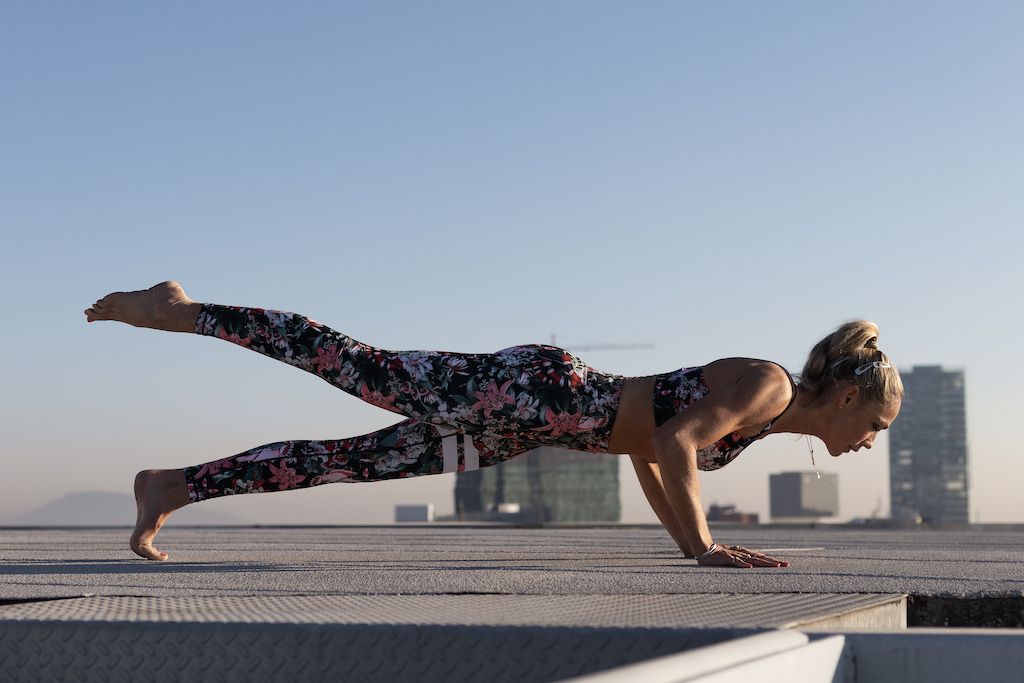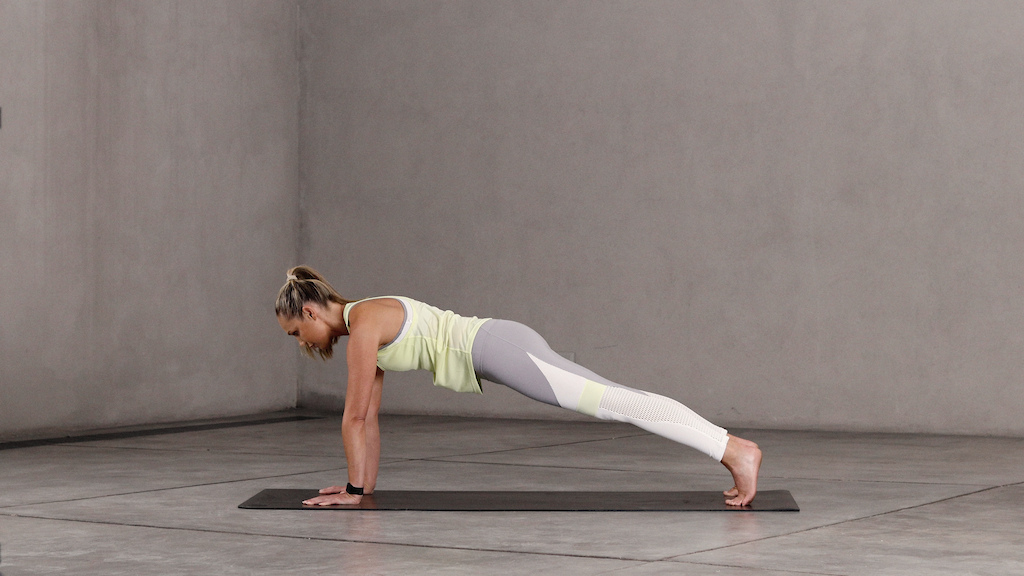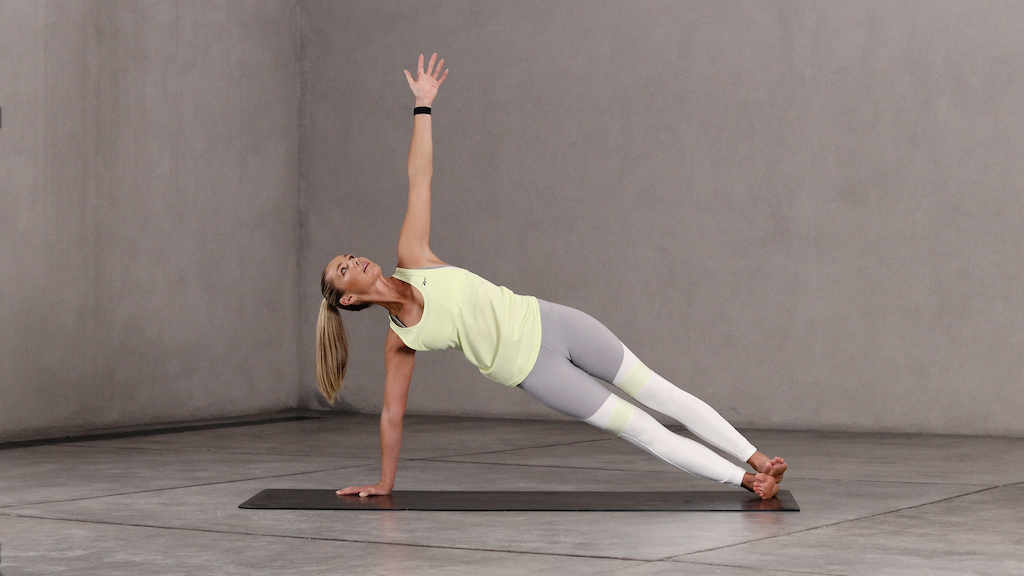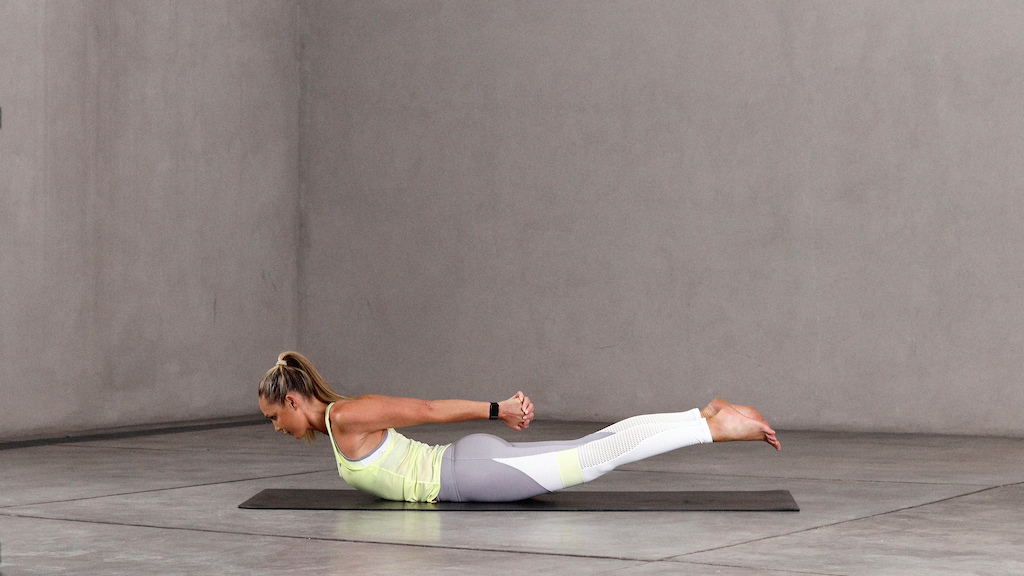3 Yoga Poses To Alleviate On-The-Bike Back Pain
Photo credit: Charley Smith
One way to understand physical pain is as a prediction signal from your brain alerting you to an area of weakness that may be vulnerable to damage. And this could be the reason that you experience a dull ache in your lower back that builds and builds during a long stretch of pedalling.
If you find yourself standing up on the pedals and arching your back at the top of a long climb, it's possible that you have a weak core and lower back or a lack of muscular endurance in this area. And that the pain you experience is your brain screaming at you to pay attention.
Building Core Strength
Unless we specifically train it, we generally we don't have very good core strength. This is especially true when our jobs require us to spend considerable time sitting, with our lower backs and abdominal stabilisers disengaged. When we are weak in this area, our core is not sufficiently prepared when we ask it to perform on the bike and we experience pain as a result.
As you lean forward over the handlebars, although you are supporting some of your weight through your upper body, the majority is stabilised by your lower back and abs. And over time, this can take toll on an unconditioned core.
If you’ve been forced to take significant time off riding, you may have found that the strength in your lower back is the first to go and that the first few rides back are uncomfortable to say the least. But the good news is that the core responds quickly to training and in a short time can be strengthened so that you no longer experience discomfort in this area.
Yoga Superpowers
Yoga is not just about candles, chanting and effortlessly putting both feet behind your head. It can also be an impressively challenging strength practice as you’ll know if you’ve ever been to an ashtanga or advanced vinyasa yoga class.
But actually, for your purposes, you don’t even need to get that good. My personal yoga philosophy is based on the 80/20 principle. What are the 20% of inputs you need to focus on to achieve 80% of the results? And in my experience, when it comes to building a strong core, these three poses are your 20%.
Your 3 Core-Strengthening Yoga Poses
Three of the most effective poses for building muscular endurance in the core are Plank, Side Plank and Locust. And this is your challenge: complete the following sequence once a day for 14 days.
1. Plank—3 sets of 1 minute with 30 seconds rest between each set. (You can do this pose on your forearms if you prefer.)
2. Side Plank—3 sets alternating 30 seconds on each side. (You can do also this pose on your forearms.)
3. Locust—3 sets of 1 minute with 30 seconds rest between each set.
And don’t worry. It’s totally fine if you can’t complete the full amount of time in the beginning. As long as you stick with it and trust the process, you will get really good super fast.
Staying Pain-Free This Season
We can't expect our bodies to indefinitely deliver without giving them adequate training and recovery. Especially when we spend much of our time sitting, travelling and insufficiently nourishing ourselves from a movement perspective.
You could, however, consider incorporating yoga as a therapeutic tool to target areas of recurring pain, release deeply-held tension and improve your range of motion so that you are able to ride pain and injury-free for multiple back-to-back months. Safe in the knowledge that you can keep up with your friends, beat your rivals and continue to ride stronger and faster, in spite of age and any injuries that you sustain.
Let me know how you find these poses and what other aches, pains and mobility issues you would like my help with. And check out my new Yoga For Mountain Bikers course for a comprehensive program to keep you fit, strong and supple throughout the season.
Author Info:
Must Read This Week
Sign Up for the Pinkbike Newsletter - All the Biggest, Most Interesting Stories in your Inbox
PB Newsletter Signup





(Anyone not into this stuff, please now feel free to ignorantly downvote me or move on to the next exercise).
Dr Stuart McGill at the U of Waterloo in Ontario conducted studies to determine how much spinal compression occurs during common back and abdominal exercises. Exercises like the Locust hold "imposes around 6000 Newtons (1350lb) of compression onto the spine".
McGill (seen as a leading authority on spine mechanics) recommends not exceeding 3300 Newtons.
Perhaps the Bird Dog would be a good alternative?
But thank you so much for your work here, your mobility work has done me no end of good!
One of several - just Google Stuart McGill Superman exercise
ojassmartpt.com/tag/superman-exercise
The routine involves variations on the "dead bug," doing all upper body work whilst on a wobble board, doing nearly all lower back on a wobble board ( body or low-weight, high-rep), and very carefully-controlled upper body movements with various hanging grips. Oh, and yoga without the locust or cat-cow
The spine is not fragile and which is something many people have a hard time understanding because of "slipped disc" stories. a slipped disc does not equal pain - which is also why many leading leading experts recommend only doing scans and imaging when there's talk about red flags like a fracture or a tumor.
giving people the idea that their body is fragile causes fear avoidance, catastrophic thoughts which can be a huge contributor to the experience of pain - and the major player when it comes to chronic LBP
Re discs, people throw around "slipped discs" incorrectly. A Bulging disc can be painless (I had one).
McGill has taken elite athletes from struggling to move to breaking world records.
Take a look at his website -https://www.backfitpro.com/ There's a whole world of "disc"overy (see what I did there).
I've forced myself to do yoga after years of back pain and herniated discs and Abi's video are my favorite and have helped a lot.
I have also heard that some of the poses are not good for the discs; thanks for providing a credible source to substantiate these claims.
yoga15.com/pose/bird-dog
Psykosocial factors plays a HUGE role.
When you perform on an elite level and wants to have the maximum output of power in a lift for example having a certain technique makes sense.
If you got a job requiring lots of heavy lifting then its the lack of restitution and loadmanagement that seems to be the larger issue.
Im about to finish my education as a physiotherapist so im doing plenty of reading -thanks
@Mfro, thanks for the link. I can't easily/cheaply get a copy of the source textbook by McGill unfortunately. From what I can see the 3300N limit comes from occupational health and safety guidelines and shouldn't be applied to an athletic population, who presumably would be exceeding those guidelines with other heavy strength training as well. Careful, progressive loading to achieve tissue load tolerance is key. That said I regularly treat people with back pain and have never prescribed superman exercises.
@lassemj: good luck with the rest of your studies! Discussing non-physical contributers to pain is hard, I've found it requires a fine balance between validating the patient's experience/suffering, developing better physical competence, and pushing them to better manage their psychosocial factors.
The way I expressed it might have been a little confusing - but Im glad you get my point.
And yes its definitely difficult talking to patients about other contributing factors to pain whilst making sure they know you acknowledge their experience of pain. Explaining stuff like central sensibilization and other mechanisms is a big pedagogical task.
Thank you, always looking for something different
I’ll just add from experience and professional advice I have been given
For a small group of people with back problems ( Dentist ,hygienists and assistants ) any pose or exercise that resembles a push-up or sit up should be avoided. It is highly likely to make any pain worse. Do palates and the other yoga poses.
Buy shorter cranks a microscope and micro surgeons chair.
one love.
X